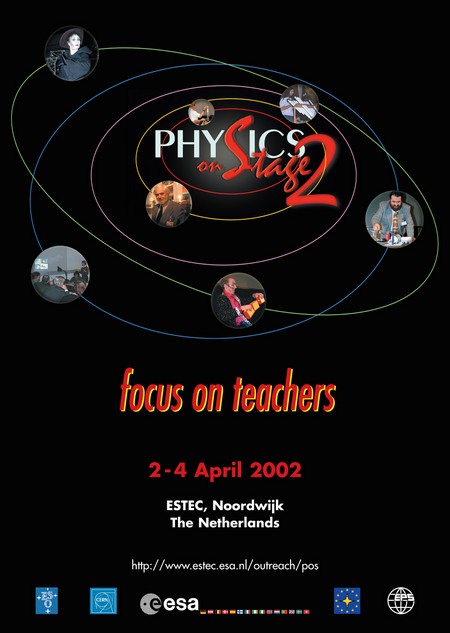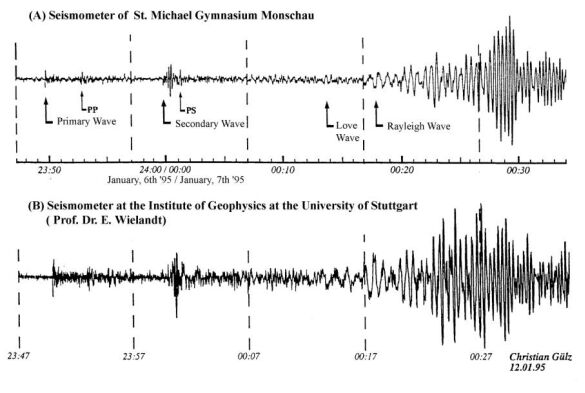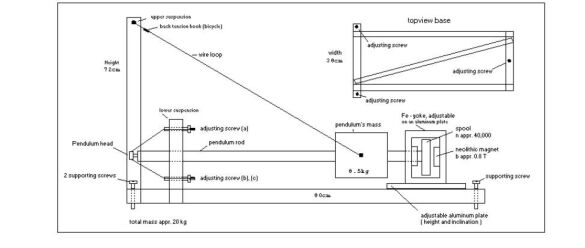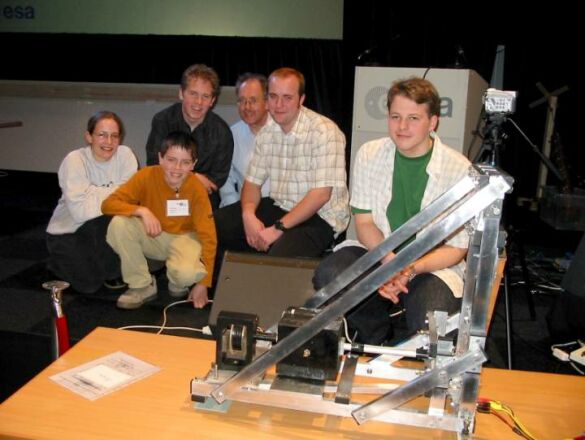A Seismic Workgroup at a German High-School - Goals and Qualities
CertificateWiebke Winkens, Martin Jansen, Christian Ruf (all form 13), Max Arndt (form 12), Christian Meurers (form 6), Ulrich Arndt, teacher
In autumn 1994, during a so-called project week, students and teachers managed to build a seismograph using only simple tools (e.g. drilling machine, circular saw). They were supported by many students' parents and several companies from far and near. In learning the necessary know-how the group was supported by several Geophysical Institutes at the Universities in Stuttgart, Bochum and Cologne. Professor Dr. Wielandt from Stuttgart gave a lot of advice to the team engaged in the project. Up to now he is still the "scientific godfather" of the seismic project at the St.Michael-Gymnasium. - In spring 1994 the first seismogram of a distant earthquake could be recorded. In Fig.1 this seismogram, which was recorded by the electromagnetic pendulum - made by the group itself, is shown in comparison to a professional registration.
The three students Sebastian Schork, Bernd Naeth and Thomas Poschen continued this work, and in 1996 they took part in the German "Young Researchers" (Jugend forscht) competition. With their contribution "Building and Organizing of a School Seismograph-Station with remote Data Access and Construction of a Educational Seismograph" they gained first place in North-Rhine-Westphalia and second place on a national level in the domain "Geophysics and Space-Sciences".
The three component station is now being attended by a Seismic Workgroup, who also worked out a detailed manual how to build a portable educational seismograph (Fig.2 ). It was successfully rebuilt four times at German High Schools (Herzogenaurach, Memmingen, Staufen, Pyrbaum). The workgroup is mostly occupied with the following questions: What are the natural causes for earthquakes? What are the main characters of this natural disaster, against which we are still rather helpless even in today's world of high-technology? In Physicsteachingin the forms 11-13 the seismograph is used in the topic "oscillations and waves". Many times the group gave talks in training-colleges of junior physics teachers coming from all parts of North-Rhine-Westphalia.
The work at the station would possibly have ended a long time ago, if the former "Young Researcher" Sebastian Schork had not updated the station software for many times and meanwhile even developed a totally new version for today's much more capable and faster computers. So it was a surprise when there was an invitation from the German Geoforschungszentrum (GFZ) in Potsdam near Berlin. The Seismic Workgroup was invited to present its goals and objectives in collaboration with Professor Dr. Bormann at an international conference for Geophysics (IAGA-IASPEI) in autumn 2001. The GFZ (Director General Professor Dr. Emmermann) sponsored flight, participation and stay for one week for Sebastian Schork and Sebastian Staiger, the first frontman, of the seismic-workgroup.
An extended and easily readable internet presentation of the Monschau School-Seismograph Station was developed by Martin Jansen. It explains the natural causes, main phenomena and possible catastrophic consequences of earthquakes, the Earth's structure, the propagation of earthquake waves, the seismograms as messengers of this travel through the Earth, the principles of functioning and the design of a seismograph, signal processing and seismogram analysis. (How to determine distance, origin-time, magnitude and epicentre coordinates).
Through "Physics on Stage" the work group got the chance, to carry out the main topics of all that in a plenary presentation. There the emphasis was put on the following aspects: To give appealing lessons in physics at school a seismograph is actually not necessary. But it may be astonishing that pupils and students have been interested in the topic of Geophysics since the beginning of our project in 1994, that means nearly eight years now. We think as well that we should give a view of the inherent conflict in our work: On the one hand there is the happiness that a self-built electro�mechanical machine works well and registers faint signals coming from a distant continent. - On the other hand the emitter of those signals may be an earthquake, which could have produced such a great disaster, so much distress, misery and harm as we have seen on TV in March 2002: we remember the large earthquake in Afghanistan...
Therefore many of the signals are nothing else but a memento mori, a reminder that tells us that even in today's world of high-technology we are still helpless against natural disasters like that of an earthquake.
Let us close with a general remark: some people say that the number of earthquakes has increased in the last decades. However statistics show that this is not correct. Indeed what has increased for modern mankind is the chance of being injured existentially.



